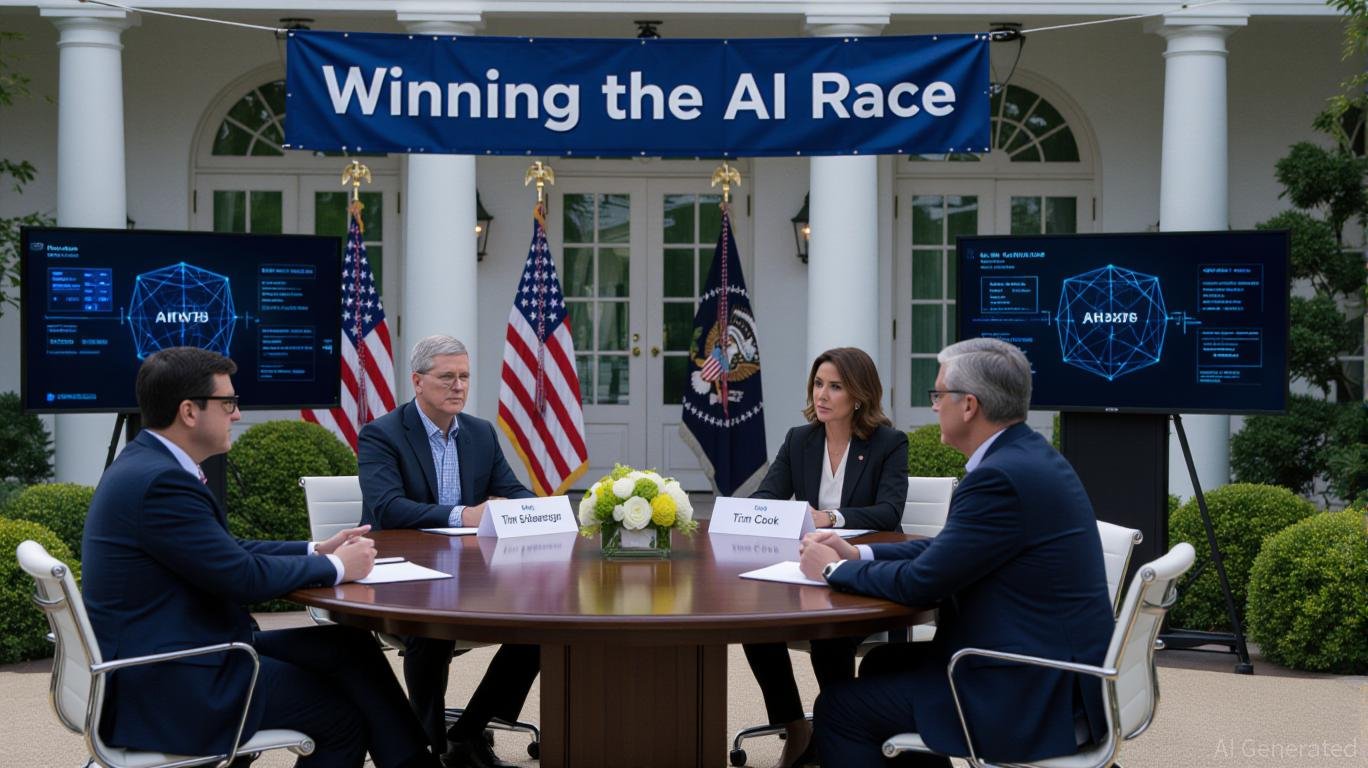Tools & Platforms
The Top 10 Boxers of All Time According to AI

By Richard D. Harroch and Dominique A. Harroch
Boxing is more than just a sport—it’s a theater of discipline, resilience, and raw power. The stories of boxing’s greatest champions are woven with tales of triumph over adversity, breathtaking victories, and an unmatched hunger for glory. These athletes step into the ring not only to battle their opponents but also to confront their own limits, pushing the boundaries of what the human spirit can endure.
Over the decades, boxing has produced some of the most celebrated athletes in history. Each generation has seen fighters who redefined the sport, brought crowds to their feet, and etched their names into the annals of greatness. These boxers weren’t just skilled pugilists; they were cultural icons who inspired millions with their courage and determination.
In this article, we count down the top 10 boxers of all time, with research assistance from ChatGPT. These fighters earned their places on this list through a combination of skill, legacy, and impact both inside and outside the ring.
1. Muhammad Ali
Muhammad Ali was a larger-than-life figure who transcended the sport of boxing. With his unmatched charisma, lightning-fast reflexes, and a fighting style as poetic as his words, Ali dominated the heavyweight division and became a global icon for his activism and larger-than-life personality.
- Nickname: The Greatest
- Weight Class: Heavyweight
- Record: 56 wins (37 KOs), 5 losses
- Notable Fights: “The Rumble in the Jungle” against George Foreman, “The Thrilla in Manila” against Joe Frazier
- Legacy Outside the Ring: Advocate for civil rights and a symbol of resistance against oppression
- Awards: Three-time heavyweight champion and Olympic gold medalist (1960)
2. Sugar Ray Robinson
Many regard Sugar Ray Robinson as the greatest pound-for-pound boxer in history. Known for his impeccable technique, speed, and power, Robinson dominated the welterweight and middleweight divisions with ease.
- Nickname: Sugar
- Weight Class: Welterweight, middleweight
- Record: 173 wins (108 KOs), 19 losses, 6 draws
- Notable Fights: Epic rivalry with Jake LaMotta, known as the “St. Valentine’s Day Massacre”
- Style: Fluid footwork and deadly counterpunching
- Legacy: The benchmark for boxing greatness; inspired the creation of the pound-for-pound ranking
- Impact: Revolutionized the way fighters approached the sport with his finesse
3. Mike Tyson
Mike Tyson was a force of nature in the 1980s, earning the nickname “Iron Mike” for his devastating power and relentless aggression. He became the youngest heavyweight champion in history at just 20 years old.
- Nickname: Iron Mike
- Weight Class: Heavyweight
- Record: 50 wins (44 KOs), 6 losses
- Notable Fights: Dominant first-round KO of Michael Spinks in 91 seconds
- Fighting Style: Aggressive, with an explosive combination of speed and power
- Legacy: Known for his intimidating persona and spectacular knockouts
- Impact: Brought global attention to the heavyweight division during his reign
4. Floyd Mayweather Jr.
Floyd Mayweather Jr. is synonymous with defensive brilliance and technical mastery. Undefeated throughout his career, Mayweather built his success on his ability to outthink and outmaneuver every opponent.
- Nickname: Money, Pretty Boy
- Weight Class: Welterweight, Super featherweight, lightweight
- Record: 50 wins (27 KOs), 0 losses
- Notable Fights: Defeated Manny Pacquiao in one of the highest-grossing fights in history
- Fighting Style: Exceptional defense, counterpunching, and ring IQ
- Legacy: Considered the best defensive boxer in history
- Impact: Revolutionized boxing as a business with his promotional savvy
5. Joe Louis
Joe Louis was a dominant heavyweight who held the title for a record 12 years. His technical skills, combined with his knockout power, made him one of the most feared fighters of his era.
- Nickname: Brown Bomber
- Weight Class: Heavyweight
- Record: 66 wins (52 KOs), 3 losses
- Notable Fights: Victory over Max Schmeling in their rematch, symbolizing democracy versus fascism
- Legacy: A unifying figure during World War II and a symbol of hope for African Americans
- Awards: Longest reign as heavyweight champion in history
- Impact: Elevated boxing’s popularity worldwide
6. Manny Pacquiao
Manny Pacquiao is the only boxer in history to win world titles in eight different weight classes. Known for his relentless work ethic and humility, Pacquiao combined power, speed, and charisma to become a global sports icon.
- Nickname: Pac-Man
- Weight Class: Flyweight to welterweight
- Record: 62 wins (39 KOs), 8 losses, 2 draws
- Notable Fights: Trilogy against Juan Manuel Márquez, victory over Oscar De La Hoya
- Style: Aggressive and fast-paced, with relentless combinations
- Legacy: Transcended boxing to become a political leader in the Philippines
- Impact: Inspired millions with his rise from poverty to global fame
7. George Foreman
George Foreman is best known for his devastating power and two careers as a world-class boxer. After an early retirement, Foreman made a stunning comeback, reclaiming the heavyweight title at 45 years old.
- Nickname: Big George
- Weight Class: Heavyweight
- Record: 76 wins (68 KOs), 5 losses
- Notable Fights: Victory over Michael Moorer at age 45 to regain the heavyweight title
- Legacy: Represented perseverance and longevity in sports
- Impact: Successfully transitioned into entrepreneurship with the George Foreman Grill
8. Roberto Durán
Roberto Durán is one of the most ferocious fighters in boxing history. He dominated the lightweight division before becoming a world champion in four weight classes.
- Nickname: Hands of Stone
- Weight Class: Lightweight to middleweight
- Record: 103 wins (70 KOs), 16 losses
- Notable Fights: Victory over Sugar Ray Leonard in the “Brawl in Montreal”
- Style: Aggressive, relentless pressure with powerful punches
- Legacy: One of the most skilled and versatile fighters of all time
- Impact: Revered in his native Panama as a national hero
9. Rocky Marciano
Rocky Marciano remains the only heavyweight champion in history to retire undefeated. Known for his relentless pressure and incredible durability, Marciano’s 49-0 record remains legendary.
- Nickname: The Brockton Blockbuster
- Weight Class: Heavyweight
- Record: 49 wins (43 KOs), 0 losses
- Notable Fights: Knockout victory over Joe Louis in Louis’ final fight
- Legacy: Embodied the spirit of determination and grit
- Impact: Inspired the fictional Rocky Balboa character
- Awards: Inducted into the Boxing Hall of Fame
Evander Holyfield was a master technician and one of the best pound-for-pound fighters in history. His epic battles with Mike Tyson and Riddick Bowe defined an era.
- Nickname: The Real Deal
- Weight Class: Cruiserweight, heavyweight
- Record: 44 wins (29 KOs), 10 losses, 2 draws
- Notable Fights: Trilogy against Riddick Bowe, upset victory over Mike Tyson
- Style: Exceptional stamina and ring intelligence
- Legacy: The only four-time heavyweight champion in history
- Impact: Cemented his reputation as one of boxing’s toughest competitors
Conclusion on Boxing Legends
Boxing’s greatest champions are more than just athletes—they’re symbols of perseverance, grit, and the relentless pursuit of greatness. Each of these boxers left an indelible mark on the sport, captivating audiences with their skill, bravery, and unforgettable moments in the ring.
Whether it’s Muhammad Ali’s charisma, Mike Tyson’s ferocity, or Floyd Mayweather’s technical mastery, these fighters represent the pinnacle of boxing excellence. Their legacies extend beyond the ropes, inspiring generations and cementing their places in history as legends of the sport.
Related Articles:
About the Authors
Richard D. Harroch is a Senior Advisor to CEOs, management teams, and Boards of Directors. He is an expert on M&A, venture capital, startups, and business contracts. He was the Managing Director and Global Head of M&A at VantagePoint Capital Partners, a venture capital fund in the San Francisco area. His focus is on internet, digital media, AI and technology companies. He was the founder of several Internet companies. His articles have appeared online in Forbes, Fortune, MSN, Yahoo, Fox Business and AllBusiness.com. Richard is the author of several books on startups and entrepreneurship as well as the co-author of Poker for Dummies and a Wall Street Journal-bestselling book on small business. He is the co-author of a 1,500-page book published by Bloomberg on mergers and acquisitions of privately held companies. He was also a corporate and M&A partner at the international law firm of Orrick, Herrington & Sutcliffe. He has been involved in over 200 M&A transactions and 250 startup financings. He can be reached through LinkedIn.
Dominique Harroch is the Chief of Staff at AllBusiness.com. She has acted as a Chief of Staff or Operations Leader for multiple companies where she leveraged her extensive experience in operations management, strategic planning, and team leadership to drive organizational success. With a background that spans over two decades in operations leadership, event planning at her own start-up and marketing at various financial and retail companies, Dominique is known for her ability to optimize processes, manage complex projects and lead high-performing teams. She holds a BA in English and Psychology from U.C. Berkeley and an MBA from the University of San Francisco. She can be reached via LinkedIn.
Copyright (c) by Richard D. Harroch. All Rights Reserved.
Tools & Platforms
A High-Growth Play on AI-Driven Connectivity

In the race to power the AI revolution, Credo Technology (CRDO) has emerged as a standout contender, leveraging its leadership in active electrical cables (AECs) and optical interconnects to capitalize on the explosive demand for high-speed, low-latency connectivity. With FY2026 shaping up as a pivotal year, investors are scrutinizing whether CRDO can sustain its hypergrowth trajectory amid intensifying competition and macroeconomic headwinds.
Financials: A Story of Explosive Growth
Credo’s Q1 2026 results, reported on August 2, 2025, underscore its meteoric rise. Revenue surged to $223.1 million, a 274% year-over-year increase and 31% sequential growth, far outpacing the $190.63 million Wall Street consensus [1]. Adjusted earnings per share (EPS) of $0.52 crushed estimates of $0.35, while non-GAAP net income ballooned to $98.3 million from $7 million in the prior-year period [1]. The company’s gross margin of 67.6% reflects operational discipline, and its cash reserves of $479.6 million provide a buffer for R&D and strategic expansion [2].
Looking ahead, CRDO’s Q2 2026 guidance of $230–240 million revenue—well above the $199 million analyst consensus—signals confidence in maintaining momentum [1]. This performance positions Credo as one of the fastest-growing semiconductor plays in the AI infrastructure space.
Strategic Positioning: AEC and Optical Markets as Growth Engines
Credo’s dominance in AECs is a cornerstone of its strategy. These cables, which offer 100x greater reliability than laser-based optical solutions and superior signal integrity over direct-attach copper (DACs), are becoming indispensable in AI data centers [3]. The company’s system-level approach—owning SerDes IP, retimer ICs, and production—enables rapid innovation cycles and cost efficiency. For instance, its PCIe Gen6 AECs for scale-up AI networks have driven triple-digit sequential growth in Q4 2025 [3].
The optical market is another growth catalyst. Credo’s recent 800G transceiver design win and development of ultra-low-power 100G-per-lane DSPs position it to double optical revenue in FY2026 [4]. Management’s focus on 3-nanometer 200G-per-lane DSPs further underscores its commitment to setting industry standards for power efficiency [4].
Customer Diversification and IP Strength
While Credo’s Q3 2025 revenue was heavily skewed toward Microsoft (86% of total), the company is actively diversifying its customer base. Three hyperscalers now contribute >10% of quarterly revenue, and two additional clients are in qualification [5]. This shift mitigates concentration risk while aligning with the broader trend of hyperscalers investing in AI infrastructure.
Credo’s intellectual property (IP) moat is equally formidable. Its proprietary SerDes technology and end-to-end control of the connectivity stack create barriers to entry. As CEO Bill Brennan noted in the Q1 2026 earnings call, “Our IP leadership allows us to define the next generation of interconnect standards” [6]. This advantage is critical in markets where differentiation hinges on power efficiency and reliability.
Market Tailwinds: AI Infrastructure as a Multi-Trillion-Dollar Opportunity
The AI data center market is projected to grow at a 31.6% CAGR, expanding from $236.44 billion in 2025 to $933.76 billion by 2030 [7]. Credo’s AEC and optical solutions are directly aligned with this demand, particularly in scale-up AI clusters requiring high-capacity, low-latency interconnects. Meanwhile, the optical interconnect market is forecasted to grow at 12.6–13.5% CAGR, reaching $35.3–49 billion by 2030 [8].
Risks and Competitive Dynamics
Despite its strengths, Credo faces challenges. Its 0.63% market share in semiconductors pales against giants like Broadcom (82.71%) and Marvell (9.05%), though its niche focus on AI infrastructure offers a path to outperformance [9]. Macro risks include potential softening in AI spending and supply chain bottlenecks. However, Credo’s diversified customer pipeline and R&D investments in PCIe retimers and 400G ports provide growth levers [5].
Conclusion: A High-Conviction Bet on Next-Gen Infrastructure
Credo Technology’s combination of record-breaking financials, proprietary IP, and strategic alignment with AI-driven connectivity trends makes it a compelling high-growth play. While risks such as customer concentration and competitive pressures persist, the company’s innovation pipeline and market positioning suggest it is well-equipped to sustain hypergrowth in FY2026 and beyond. For investors seeking exposure to the AI infrastructure boom, CRDO represents a rare blend of scalability and technical differentiation.
Source:
[1] Credo Technology shares soar as Q1 earnings crush expectations [https://finance.yahoo.com/news/credo-technology-shares-soar-q1-211527224.html]
[2] Credo Technology Group (CRDO) AI Growth and Revenue Projections [https://www.monexa.ai/blog/credo-technology-group-crdo-surges-with-ai-data-ce-CRDO-2025-07-28]
[3] Credo Bets Big on AEC Business: Will It Deliver Sustainable Growth? [https://finance.yahoo.com/news/credo-bets-big-aec-business-141500129.html]
[4] Contradictions Emerge on Optical DSP Market, AECs, and Customer Concentration [https://www.ainvest.com/news/credo-q1-2026-earnings-call-contradictions-emerge-optical-dsp-market-aecs-customer-concentration-supply-chain-constraints-2509/]
[5] Credo Technology (CRDO): AI Growth, Risks, and Market Opportunities [https://www.monexa.ai/blog/credo-technology-crdo-ai-growth-risks-and-market-o-CRDO-2025-03-06]
[6] Credo Technology Q1 2026 Earnings Call Transcript [https://www.fool.com/earnings/call-transcripts/2025/09/03/credo-crdo-q1-2026-earnings-call-transcript/]
[7] AI Data Center Global Research Report 2025–2030 [https://finance.yahoo.com/news/ai-data-center-global-research-091100406.html]
[8] Optical Interconnect Market Size, Outlook 2025–2030 [https://www.mordorintelligence.com/industry-reports/optical-interconnect-market]
[9] CRDO’s Market Share Relative to Competitors [https://csimarket.com/stocks/competitionSEG2.php?code=CRDO]
Tools & Platforms
What It Means for Tech Stocks and AI Playbook 2025

The Trump administration’s 2025 AI Action Plan, unveiled in July, marks a seismic shift in U.S. technology policy, prioritizing deregulation, infrastructure expansion, and global competitiveness. Titled “Winning the AI Race: America’s AI Action Plan”, the strategy document outlines 90 federal policy actions across three pillars: Accelerating Innovation, Building American AI Infrastructure, and Leading International AI Diplomacy and Security [1]. For investors, this represents a clear signal of where capital will flow—and where tech stocks are likely to thrive.
Deregulation and Ideological Neutrality: A New Framework for AI Development
The administration’s executive order “Removing Barriers to American Leadership in AI” eliminates regulatory hurdles that previously constrained AI development, particularly in data center permitting and semiconductor manufacturing [2]. Simultaneously, it mandates that federal agencies adopt AI systems that are “truth-seeking” and “ideologically neutral,” effectively sidelining models tied to diversity, equity, and inclusion (DEI) or climate change narratives [3]. This creates a favorable environment for firms specializing in explainable AI and bias-free algorithms.
For example, OpenAI has aligned with these principles by revising its model training protocols to exclude DEI-related datasets, a move praised by the Department of Commerce [4]. Similarly, Nvidia’s recent $500 billion investment in U.S. chip manufacturing—backed by Trump’s tax incentives—positions it as a key beneficiary of the administration’s deregulatory push [5].
Infrastructure as a Strategic Priority: Capital Allocation Opportunities
The AI Action Plan emphasizes infrastructure as a cornerstone of U.S. competitiveness. The administration is streamlining permits for data centers and energy projects, recognizing that AI’s growth is inextricably linked to power availability. Nvidia CEO Jensen Huang has called energy development “crucial for AI growth,” and the company’s Blackwell GPU manufacturing expansion in Texas is a direct response to these policy tailwinds [6].
Oracle and SoftBank’s $500 billion Stargate project further underscores this trend. By building a nationwide network of data centers and AI-ready infrastructure, the partnership aims to secure a dominant share of the federal government’s AI procurement contracts [7]. For investors, this signals a shift toward infrastructure-heavy tech stocks, particularly those with vertical integration in energy and hardware.
Global AI Diplomacy and Export Opportunities
The administration’s focus on international AI leadership is reshaping export strategies. The U.S. is now promoting “secure, full-stack AI export packages” to allies, ensuring American technology becomes the global standard [8]. This has already benefited Nvidia, which regained 50% of the Chinese AI chip market after Trump relaxed export controls on H20 and Blackwell GPUs [9].
OpenAI and Oracle are also leveraging these policies. OpenAI’s open-source models, aligned with U.S. values, are being integrated into federal systems, while Oracle’s collaboration with Nvidia on AI Enterprise solutions is expanding into global markets [10]. For investors, this highlights opportunities in firms with strong international distribution networks and partnerships with U.S. allies.
Risks and Considerations
While the policy shift offers significant upside, risks remain. The emphasis on ideological neutrality could alienate firms with progressive agendas, and state-level regulations—such as New York’s automated decision-making disclosure laws—may create friction [11]. However, the administration’s threat to withhold federal funding from states with “restrictive” AI laws suggests a strong federalist approach [12].
Conclusion: Positioning for the AI-First Era
Trump’s AI Action Plan is a masterclass in strategic alignment between policy and private-sector innovation. For investors, the playbook is clear: prioritize firms with infrastructure scale (Nvidia, Oracle), those adapting to ideological neutrality (OpenAI), and those with global export capabilities (SoftBank). As the U.S. races to dominate AI, capital will flow to companies that align with the administration’s vision of deregulation, infrastructure, and global leadership.
Source:
[1] White House Unveils America’s AI Action Plan [https://www.whitehouse.gov/articles/2025/07/white-house-unveils-americas-ai-action-plan/]
[2] President Trump AI Action Plan Key Insights [https://www.lw.com/en/insights/president-trump-ai-action-plan-key-insights]
[3] How Trump’s AI Action Plan and Executive Orders Will Impact US Technology and Federal Procurement [https://www.orrick.com/en/Insights/2025/08/How-Trumps-AI-Action-Plan-and-Executive-Orders-Will-Impact-US-Technology-and-Federal-Procurement]
[4] GPT-5 and OpenAI’s strategy, Trump’s AI Action Plan [https://cset.georgetown.edu/newsletter/august-14-2025/]
[5] NVIDIA’s Strategic Position in AI Amid Trump’s Policy [https://www.ainvest.com/news/nvidia-strategic-position-ai-trump-policy-tailwinds-2507/]
[6] Nvidia CEO: Trump’s AI plan will accelerate innovation in … [https://www.foxbusiness.com/politics/nvidia-ceo-says-trumps-ai-plan-fundamentally-change-us-position-years-come]
[7] Stargate: Trump announces a $500 billion AI infrastructure [https://www.cnn.com/2025/01/21/tech/openai-oracle-softbank-trump-ai-investment]
[8] The Trump Administration’s 2025 AI Action Plan [https://www.sidley.com/en/insights/newsupdates/2025/07/the-trump-administrations-2025-ai-action-plan]
[9] Nvidia Stock Investors Just Got Good News From President … [https://www.aol.com/nvidia-stock-investors-just-got-075500935.html]
[10] Oracle and NVIDIA Help Enterprises and Developers … [https://www.oracle.com/news/announcement/oracle-and-nvidia-help-enterprises-and-developers-accelerate-ai-innovation-2025-06-12/]
[11] Summary of Artificial Intelligence 2025 Legislation [https://www.ncsl.org/technology-and-communication/artificial-intelligence-2025-legislation]
[12] AI Policy Alert: What to Know Before the White House … [https://www.healthlawadvisor.com/ai-policy-alert-what-to-know-before-the-white-house-releases-its-ai-action-plan]
Tools & Platforms
A Strategic Inflection Point for AI and Corporate Alignment

The Trump administration’s recent AI Action Plan and the high-profile Tech Summit in the newly renovated White House Rose Garden mark a pivotal recalibration of U.S. technology policy. By aligning corporate priorities with federal deregulatory ambitions, the administration is reshaping the investment landscape for artificial intelligence. This analysis explores the strategic implications of this alignment, focusing on how Trump’s policies are redefining risk, reward, and global competitiveness in the AI sector.
Deregulation as a Catalyst for Innovation
The administration’s AI Action Plan, unveiled on July 23, 2025, prioritizes accelerating innovation through regulatory rollbacks. Over 90 federal policy actions aim to remove barriers to AI development, including streamlined permitting for data centers and reduced environmental restrictions on infrastructure projects [2]. For instance, the use of categorical exclusions under the National Environmental Policy Act (NEPA) now expedites data center construction, a move that could unlock billions in private investment. According to a report by Bloomberg, this deregulatory push has already spurred a 20% surge in capital expenditures by hyperscale cloud providers in Q3 2025 [4].
The emphasis on “ideological neutrality” in federal AI procurement, formalized via the “Preventing Woke AI” executive order, further signals a shift in priorities. By mandating that AI models adhere to “truth-seeking” principles, the administration is fostering a market environment where companies like Nvidia and Microsoft—whose open-weight models align with these guidelines—stand to gain significant federal contracts [5]. This creates a dual opportunity: firms that adapt to the new framework may secure lucrative government partnerships, while those lagging in compliance risk marginalization.
Infrastructure and Export-Driven Growth
A cornerstone of the AI Action Plan is the push to build domestic AI infrastructure, including semiconductors and data centers. The administration’s call for a single federal standard—replacing a patchwork of state-level regulations—has already influenced investor behavior. Morgan Stanley notes that tech stocks in the S&P 500 accounted for 80% of the index’s gains in 2025, with AI-related equities outperforming by a 15-point margin [4]. This trend is amplified by the administration’s focus on exporting the “American AI Technology Stack” to allies, a strategy that could expand markets for U.S. firms while countering Chinese influence [3].
However, this infrastructure push is not without risks. Critics warn that reduced environmental oversight could lead to long-term costs, such as energy grid strain and ecological damage. Yet, the administration’s commitment to modernizing the power grid—part of its AI Action Plan—suggests a calculated effort to mitigate these concerns through public-private partnerships [5].
Corporate Alignment and Investor Sentiment
The Trump administration’s summit with tech leaders like Mark Zuckerberg, Tim Cook, and Bill Gates underscores a deliberate effort to harmonize corporate and federal agendas. This alignment has translated into investor confidence: since the plan’s announcement, the S&P 500’s AI-driven gains have surged, with Nvidia’s market cap alone rising by $1.2 trillion in six months [1].
Yet, this optimism is tempered by divergent regulatory pressures. While the federal government promotes deregulation, states like California and New York have maintained stricter AI oversight. This creates a “regulatory arbitrage” scenario, where companies may prioritize federal-aligned strategies to access funding and contracts, even if it means sidestepping state-level safeguards [2]. For investors, this duality presents both opportunities (e.g., scalable AI deployments) and risks (e.g., reputational damage from perceived ethical lapses).
Strategic Implications for Investors
The administration’s focus on global AI leadership—through alliances with like-minded nations and export controls—positions U.S. tech firms to dominate emerging markets. However, the lack of detailed implementation timelines in the AI Action Plan raises questions about execution risks [6]. Investors should prioritize companies with robust supply chains and geopolitical agility, such as semiconductor manufacturers and cybersecurity firms.
Conversely, sectors reliant on state-level regulations (e.g., healthcare AI with privacy mandates) may face headwinds. The administration’s discouragement of state-level AI rules—via funding decisions tied to regulatory climates—could force firms to choose between compliance and profitability [1].
Conclusion
Trump’s Tech Summit and AI Action Plan represent a strategic inflection point, redefining the interplay between corporate innovation and federal policy. While deregulation and infrastructure investment offer clear tailwinds for tech stocks, investors must navigate the tension between short-term gains and long-term risks. The administration’s emphasis on ideological neutrality and global competitiveness suggests a market environment where alignment with federal priorities will increasingly dictate success. For now, the data—and the market—seem to be on the administration’s side.
Source:
[1] The Trump Administration’s 2025 AI Action Plan [https://www.sidley.com/en/insights/newsupdates/2025/07/the-trump-administrations-2025-ai-action-plan]
[2] Tech companies want to move fast. Trump’s ‘AI Action Plan’ [https://www.latimes.com/business/story/2025-07-23/trump-unveils-ai-action-plan]
[3] Trump AI Summit Targets Hardware as Key to US Supremacy [https://www.bloomberg.com/news/newsletters/2025-07-28/trump-ai-summit-targets-hardware-as-key-to-us-supremacy]
[4] Q2 2025 Market Perspective [https://altiumwealth.com/blogs/altium-insights/q2-2025-market-perspective]
[5] Trump Administration Unveils AI Action Plan with … [https://www.mayerbrown.com/en/insights/publications/2025/07/trump-administration-unveils-ai-action-plan-with-implications-for-innovation-infrastructure-and-global-tech-competition]
[6] Inside Trump’s Ambitious AI Action Plan | Stanford HAI [https://hai.stanford.edu/news/inside-trumps-ambitious-ai-action-plan]
-

 Business6 days ago
Business6 days agoThe Guardian view on Trump and the Fed: independence is no substitute for accountability | Editorial
-
Tools & Platforms3 weeks ago
Building Trust in Military AI Starts with Opening the Black Box – War on the Rocks
-

 Ethics & Policy1 month ago
Ethics & Policy1 month agoSDAIA Supports Saudi Arabia’s Leadership in Shaping Global AI Ethics, Policy, and Research – وكالة الأنباء السعودية
-

 Events & Conferences4 months ago
Events & Conferences4 months agoJourney to 1000 models: Scaling Instagram’s recommendation system
-

 Jobs & Careers2 months ago
Jobs & Careers2 months agoMumbai-based Perplexity Alternative Has 60k+ Users Without Funding
-

 Education2 months ago
Education2 months agoVEX Robotics launches AI-powered classroom robotics system
-

 Funding & Business2 months ago
Funding & Business2 months agoKayak and Expedia race to build AI travel agents that turn social posts into itineraries
-

 Podcasts & Talks2 months ago
Podcasts & Talks2 months agoHappy 4th of July! 🎆 Made with Veo 3 in Gemini
-

 Podcasts & Talks2 months ago
Podcasts & Talks2 months agoOpenAI 🤝 @teamganassi
-

 Education2 months ago
Education2 months agoMacron says UK and France have duty to tackle illegal migration ‘with humanity, solidarity and firmness’ – UK politics live | Politics



















